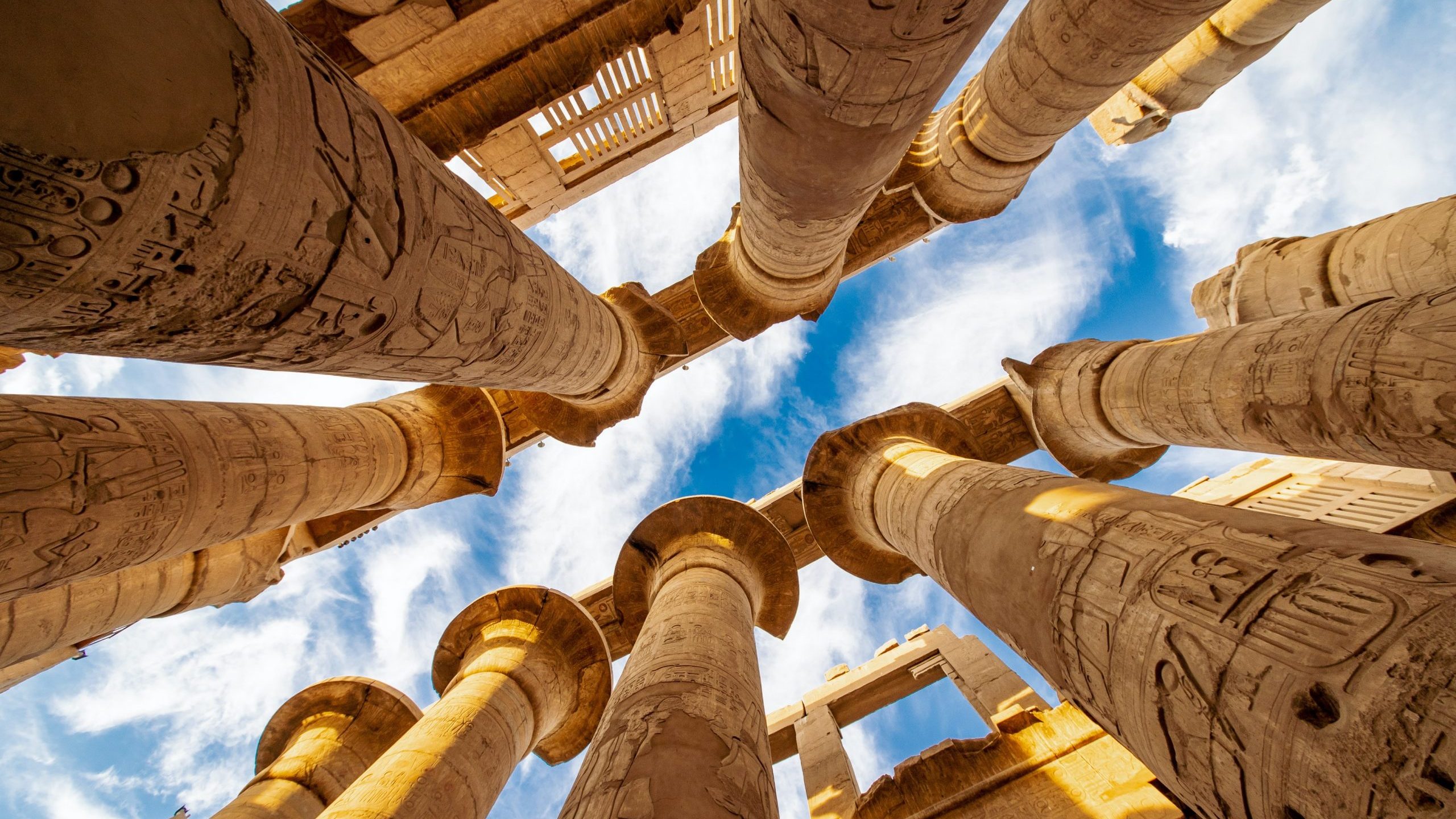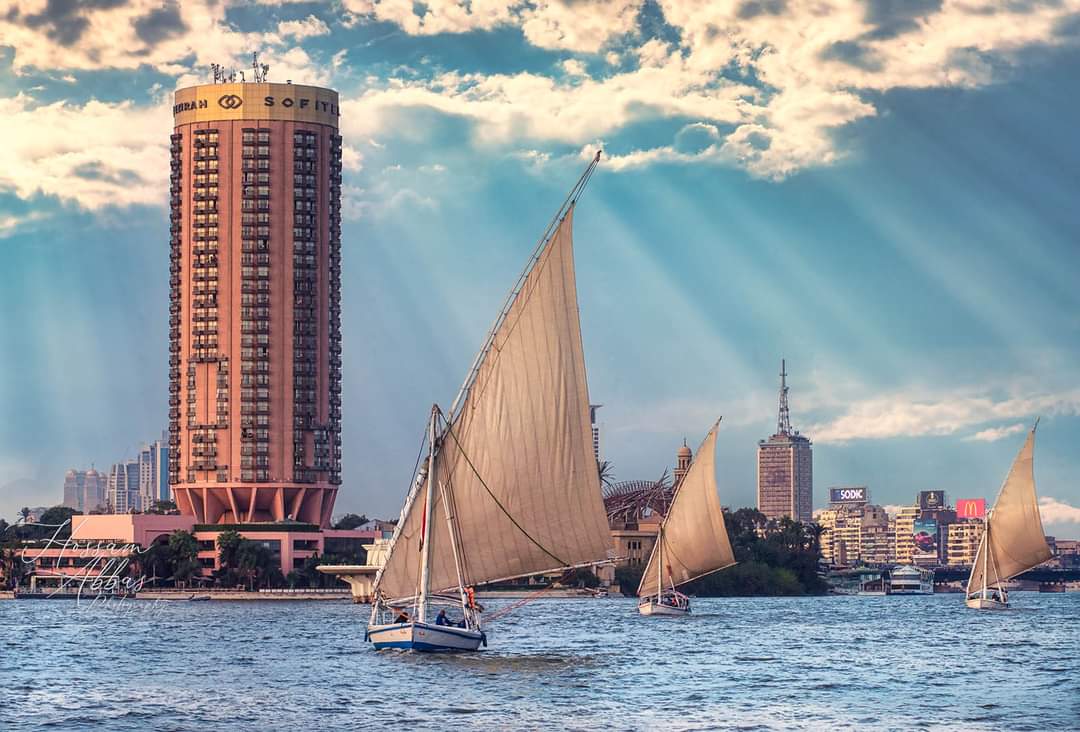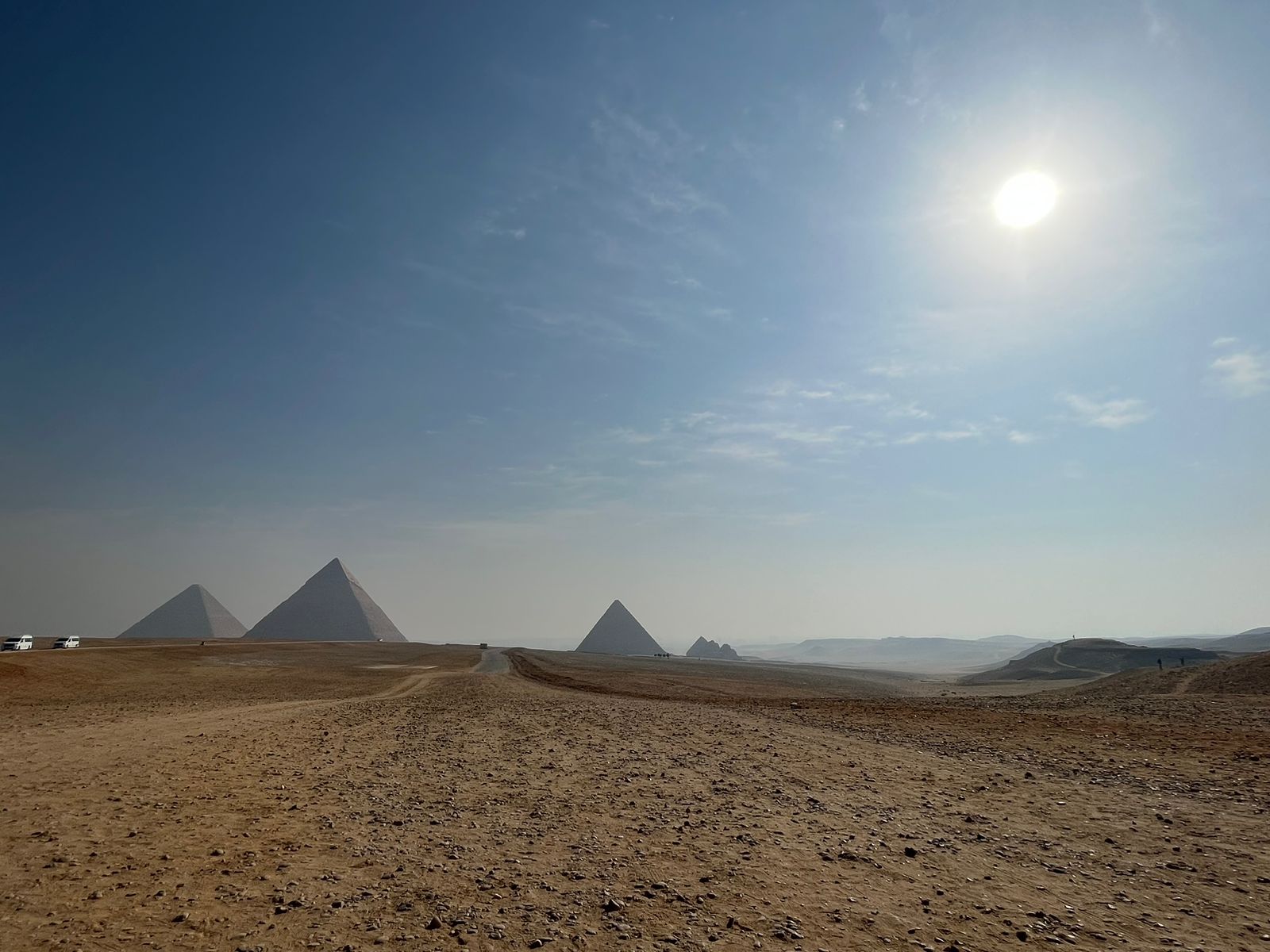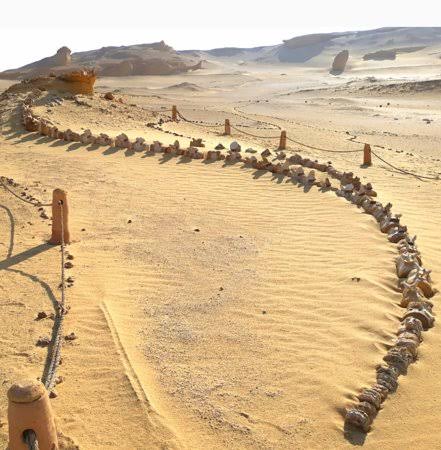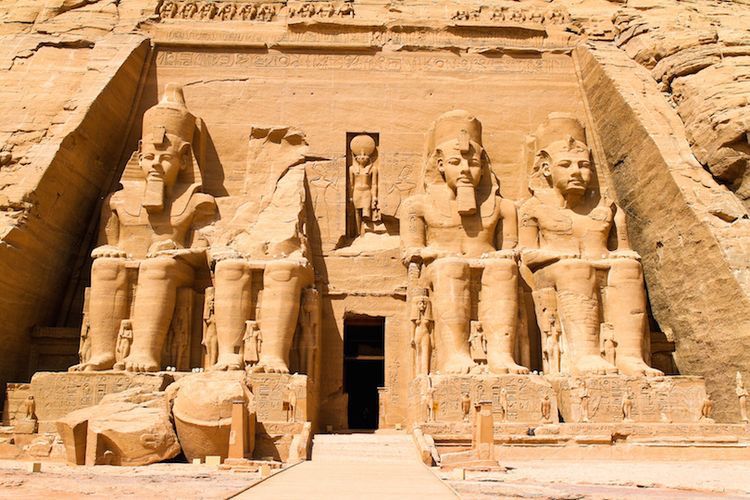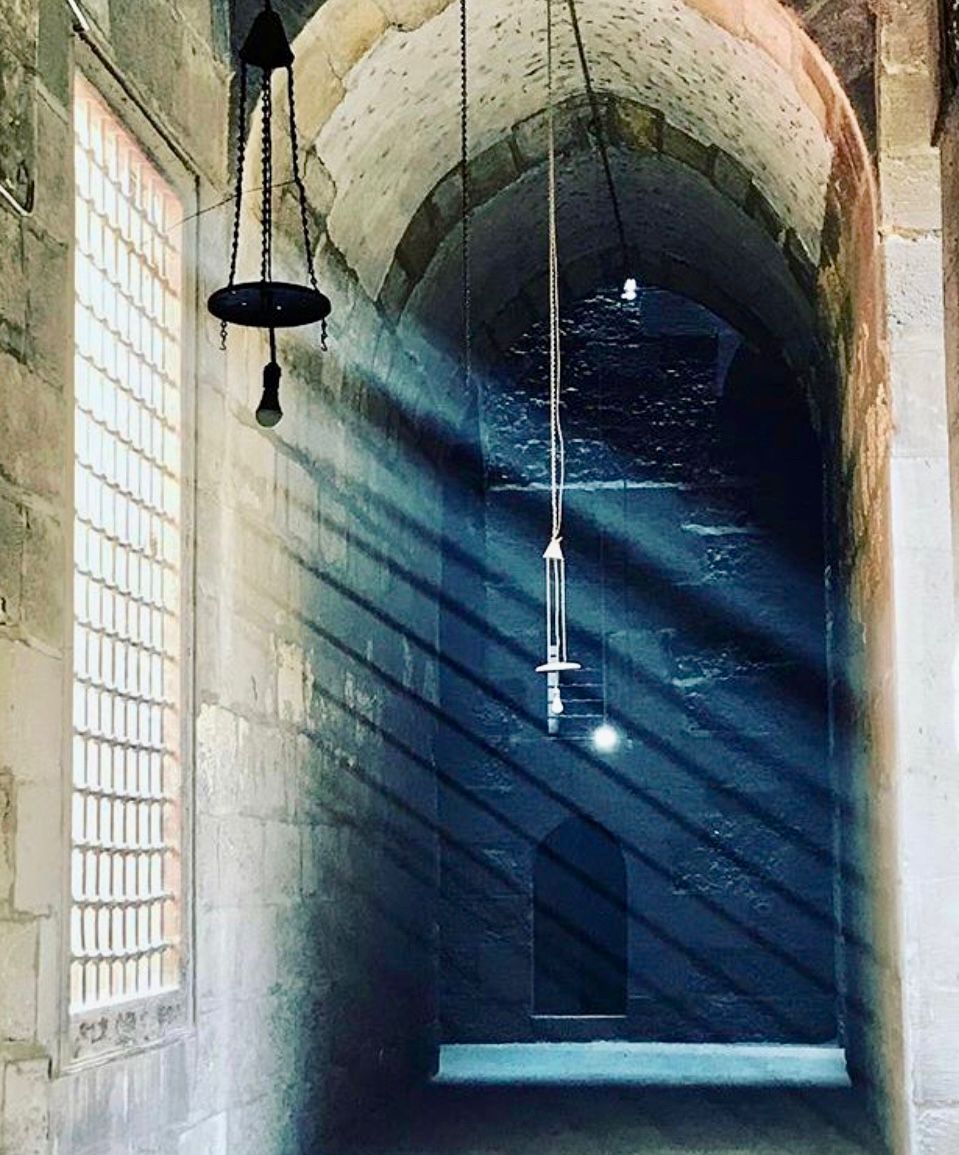Discover Egypt 12 Days
Day 1: arrival & overnight in Cairo
Arrival Cairo International Airport and meet the tour coordinator and driver. They will help you navigate your way through the airport and escort you to your hotel. Once at the hotel, the tour coordinator will provide details regarding Day 2 Excursions. You will spend the night in the hotel and awake for a day full of adventure.
Day 2: pyramids, Saqqara, Serapeum & Memphis
After enjoying your breakfast, you will be met by the Egyptologist who will provide your full day of touring. The adventure begins west of the Nile River in a town called Giza. It is here you will witness Egypt’s most visited attractions—the Pyramids at Giza and the Great Sphinx. Built for three kings of the Fourth Dynasty, the pyramids were designed to be the tombs of Khufu, Khafre, and Menkaure. In addition to the three main pyramids, you will see the queens’ pyramids and the Great Sphinx.
The next stop for today will be the ancient city of Saqqara, an amazing display of how tomb and pyramid-building progressed. Saqqara is a necropolis containing burials from different dynasties. It includes both royal and nonroyal tombs, mastabas, and cemeteries. We continue to the Serapeum of Saqqara where we will enter a series of tunnels to see the sarcophagi of the Apis bulls, sacred to the god Ptah.
Ptah was the local god of the town of Memphis, our next location. Who was a patron of artisans and craftsman and was also considered a creator god. Memphis was founded in 2925 BC, and the Egyptian king Menes helped to unite Upper Egypt and Lower Egypt. In fact, it was the capital during the Old Kingdom. Memphis is an open-air museum with many things to see such as a statue of Rameses II and the famous 80-ton sphinx made out of one gigantic piece of alabaster.
After you have explored the splendors of the day, your driver will take you back to your hotel, any you will be at leisure for the evening. Overnight in the hotel at Giza.
Meals included: breakfast and lunch.
Day 3: AL Fayoum
Today we will head out for a unique expedition. After breakfast, we will explore the city of Fayoum to enjoy the Lahun Pyramid and Qaroon Lake. On our way to the governate, we will pass many typical Egyptian farms that seem to thrive in the desert. The land is irrigated through the use of ancient waterwheels, which are still in operation today. Our first stop will be Lahun Pyramid, a Twelfth Century pyramid fashioned out of mud brick. Lahun Pyramid opened for visitors in 2019, so you will have the opportunity to explore the tunnels of this amazing pyramid. We will also visit a pottery village where you will witness workers making the pottery by hand. You will even get the chance to try your hand at spinning some homemade pottery. We will enjoy lunch along the Qaroon Lake where we will witness the abundant wildlife, including many migratory birds. In addition, we will see many Egyptian families enjoying their time along the lake’s shore. Once we conclude our visit, we will be back to Cairo for an overnight stay.
Meals included: breakfast and lunch
Day 4: Luxor
Transfer to Cairo airport and have a domestic flight to Luxor . Be ready for the most exciting part of nile cruise from Luxor to Aswan . Luxor holds seventy percent of Egypt’s antiquities. The importance of this city in Egypt’s history is unparalleled. Upon arrival to Luxor we will begin our day of touring in the East Bank where we will find the Karnak and Luxor temples. The Karnak temple, also known as the Temple of Amun-Ra, honored not only Amun-Ra but Osiris, Montu, Isis, Ptah, and other Egyptian rulers. The area of Karnak Temple is around 200 acres, so it is immense. In fact, the debate is still on as to whether it or Angor Wat (in Cambodia) is the largest temple. As we leave Karnak, we will begin our trip to the Luxor temple. At one time there were sphinxes that lined a path from Karnak to Luxor, but it is not fully excavated. You will, however see a portion of the sphinx alley as it leads to the Luxor temple. Luxor temple is one of the most intact temples, so you will see many interesting statues, hieroglyphs, and rooms. Your day will end as you board the cruise ship .
Meals included: breakfast, lunch and dinner
Day 5: Valley of the Kings, Hatshepsut, deir el madina & colossi of Memnon
We cannot leave Luxor before visiting the west bank of the Nile. Today we will take the time to visit several sites. One of the sites will be the Valley of the Kings. After pyramid building began to wane, the kings still needed a final resting place to preserve themselves and store all their treasures. Housing nearly all the tombs for the kings of the 18th, 19th, and 20th dynasties, the Valley of the Kings was designed to help hide the burial places of the kings to prevent looting. One of the most famous tombs here is the tomb of Tutankhamen. We will have the opportunity to explore some of the tombs. Next, we move to the mortuary temple of Hatshepsut. Hatshepsut was the wife to Thutmose II but became pharaoh after he died. This mortuary temple was modeled after Mentuhotep’s but at a much larger scale. We will explore this beautiful temple which is set into the cliffs at Deir el-Bahari. Later, we will move to Deir el-Medina, which is the ancient village of the craftsmen of the Valley of the Kings. Our last site to visit will be the Colossi of Memnon where you will see two (nearly 60 feet tall) seated statues of Amenhotep III. These statues were once the entrance to Amenhotep’s mortuary temple. As our day concludes, we will return to our cruise ship and prepare for an overnight trip to Edfu via the Esna Lock.
Meals included: breakfast, lunch and dinner
Day 6: Edfu & Kom Ombo
Edfu temple. Located on the Nile River between Luxor and Aswan, the Edfu temple, as known as the Temple of Horus, is the tallest and best-preserved temple in Egypt. This temple was designed to honor the divine birth of Horus and the pharaoh. We will take some time to explore this temple before we return to our cruise ship and set sail for the Temple of Kom Ombo, an unusual double temple built for the falcon god Horus and the crocodile god Sobek. Kom Ombo also contains an engraving which is thought to depict the first use of medical and surgical instruments. After completing our tour of this fascinating place, we will board the cruise ship and head for Aswan. Meals included: breakfast, lunch, dinner
Day 7 : Abu Simble
After breakfast on the cruise ship, we will begin our journey to Abu Simbel. Abu Simbel is not only an amazing site built for Ramses II and his wife Nefertari, but it also presents the amazing feat of ingenuity. In the 1960s the Egyptian government began construction on Aswan High Dam. Its purpose was to prevent the annual flooding of the Nile River and to bring electricity to all people of Egypt. The trouble with the High Dam was it would permanently flood many of the antiquities. As a result, massive projects were begun to help preserve these sites. Abu Simbel was one of them. Over the course of several years, Abu Simbel was cut apart and reconstructed on a higher plane, so visitors would still be able to stand in awe of ancient Egyptian ingenuity. Today our guide will take us through both the Great Temple of Ramses II and the Small Temple of Nefertari as we see just how incredible the temples are.
Once concluding our visit we will return to our cruise ship for lunch and a little leisure time. In the early evening you will board a felucca for a lovely boat ride through Aswan. You will learn about the Nubian village as you have time to explore some of Aswan’s outstanding natural beauty.
Your evening will be at your leisure as you spend your last night on board the ship.
Meals included: breakfast, lunch and dinner
Day 8 : High dam & Philae temple
Today we will leave the cruise ship and begin our touring at the Aswan High Dam. The High Dam was built between 1960 and 1970 to help control Nile flooding, provide water storage for irrigation, and to bring electricity to the people of Egypt. Prior to the High Dam being built, the Aswan Low Dam served to provide similar effects to the Nile River. Today the High Dam protects the Nile basin from flooding and droughts while providing jobs for many Egyptian people.
Once concluding the High Dam, we will continue on to the Philae Temple. This temple was dedicated to Isis, the wife of Osiris and mother to Horus. Like Abu Simbel, the Philae Temple also had to be moved to a new location because of the construction of the High Dam. The process to move the Philae Temple was quite intense as a temporary dam was built around the majority of the temple and the water was pumped out of the space. This allowed the architects and other skilled craftsmen to disassemble then reassemble the site. To get to the Philae temple, you will take a water taxi.
Finally we will go to Aswan airport to take flight back to Cairo. you will once again be met by the tour coordinator and driver who will take you to your hotel. You will be able to enjoy the rest of the evening at your leisure.
Meals included: breakfast and lunch
Day 9: Cairo
Our first visit will be the Egyptian Museum. This museum houses over 120,000 artifacts from Egyptian history. Some of their most famous include the entire collection of Tutankhamen. Your guide will introduce some of the many important pieces as well as allow you some time to wander through the museum to peruse the collections. Once finish the museum, we will head to Abu Tarek for lunch. Abu Tarek is a multi-story restaurant that serves wonderful Koshary. It is definitely a special Egyptian treat.
You might have noticed a wall in parts of Cairo. This wall served to protect ancient Cairo and another city called Ayyubid from the Crusaders. Sala-Al-Din (Saladin) was the leader of the Ayyubid, and he decided to fortify both his city and ancient Cairo with this wall. It proved to be quite formidable as the Citadel of Saladin was nearly impenetrable. Today, as we learn about the history of the Citadel, we also venture inside the walls to the highest point, the Mohamed Ali Mosque. This ancient mosque is quite beautiful and will provide greater insight into most of the Egyptians’ religion, Islam.
Next up is the Khan el Khalili Bazaar. It is a wonderful depiction of an ancient outdoor shopping center. You will have the opportunity to wander the narrow alleyways and see many items unique to the Egyptian markets. As you continue to wander, you will have the opportunity to traverse Cairo’s oldest street El-Moez Street. This pedestrian only street, just beyond Khan el Khalili, is an open-air museum and runs over half a mile.EL- Moez Street is less touristy and provides those who travel it a unique look at Islamic architecture.
Then we will be back to your hotel in Cairo for the evening at leisure.
Meals included: Breakfast and Lunch.
**Ladies please consider bringing a scarf with you on our tour today. It will be needed to enter the Mohamed Ali Mosque. Also, conservative dress is required while inside the mosque.
Day 10: Coptic Cairo & Alexandria
Our day starts by visiting both Coptic Cairo and the Monastery of St. Simon. In Coptic Cairo we will have the opportunity to see many Christian churches and influences for Egypt. One church in particular, the Monastery of St. Simon is one of those churches.We will then head toward Alexandria and overnight there.
Meals included: Breakfast and Lunch
Day 11: Alexandria
Enjoy breakfast as you prepare for a wonderful day in Alexandria, a city with many Roman and Greek influences. We begin with one of the Seven Wonders of the Medieval World, the Catacombs of Kom El Shoqafa. This catacomb is a mixture of Greco, Egyptian, and Roman art. It is believed to have been built for one family, but eventually transformed into a community catacomb.
Next, we will go to the Pompei Pillar. It is hard to imagine that this pillar weighs approximately 285 tons and was carved out of one piece of red granite. It is located on the grounds of the Serapeum of Alexandria and has two sphinx statues near its base. Our tour continues to the Alexandria National Museum. The museum is located in an Italian styled mansion and was the former home to the American consulate. Today, it has an extensive collection of artifacts that tell the story of Alexandria in Egypt.
Another important place in Alexandria is the Great Library. At one time in history, Egypt was known to have one of the largest libraries of the ancient world. It housed many papyrus scrolls and became regarded as the capital of knowledge and learning. As we visit the library, we will not only see many parts of history, but we will see how it has continued to remain a modern place for learning.
Before return to Cairo we will enjoy at the beautiful Montazah Gardens. Surrounding the former presidential palace of first Anwar el-Sadat then Hosni Mubarak, the gardens are vibrant and very relaxing. We will enjoy them for a while before we drive back to Cairo for the evening where we will stay.
Meals included: Breakfast and Lunch.
Last day: the farewell
Today will be the final day of our tour of the magical Egypt, and we will take you back to Cairo International Airport to catch your flight .Thank you for spending the time with us.
Meals included: Breakfast.

